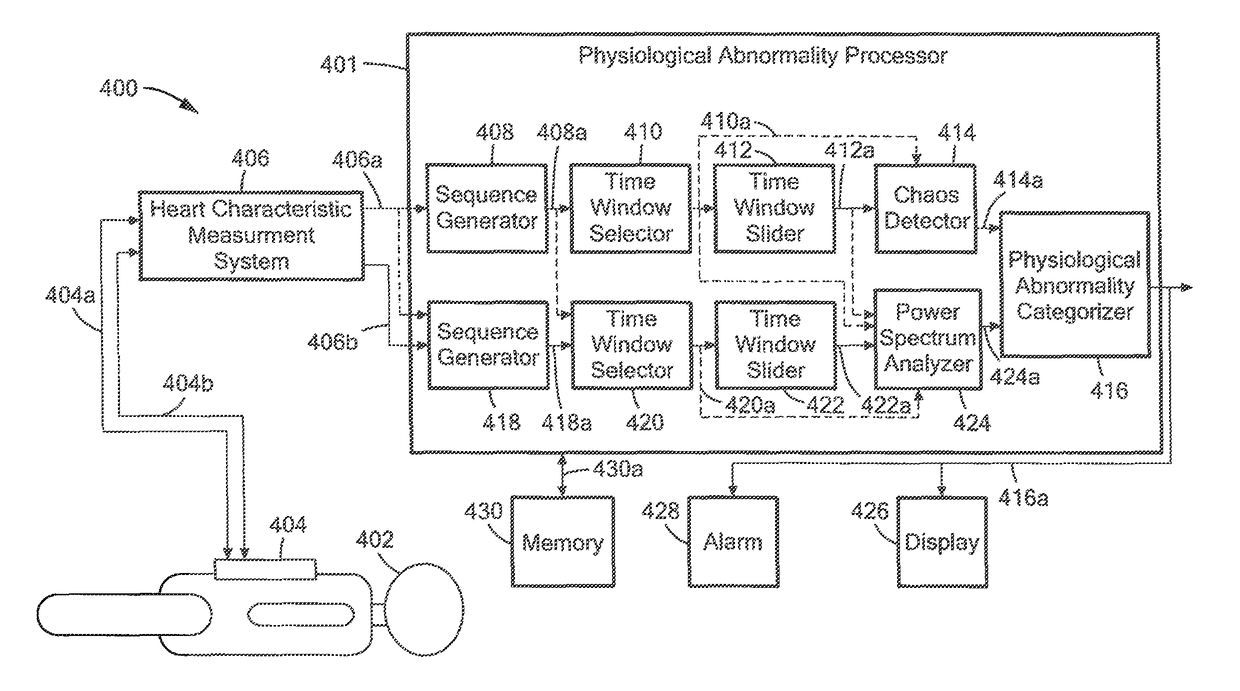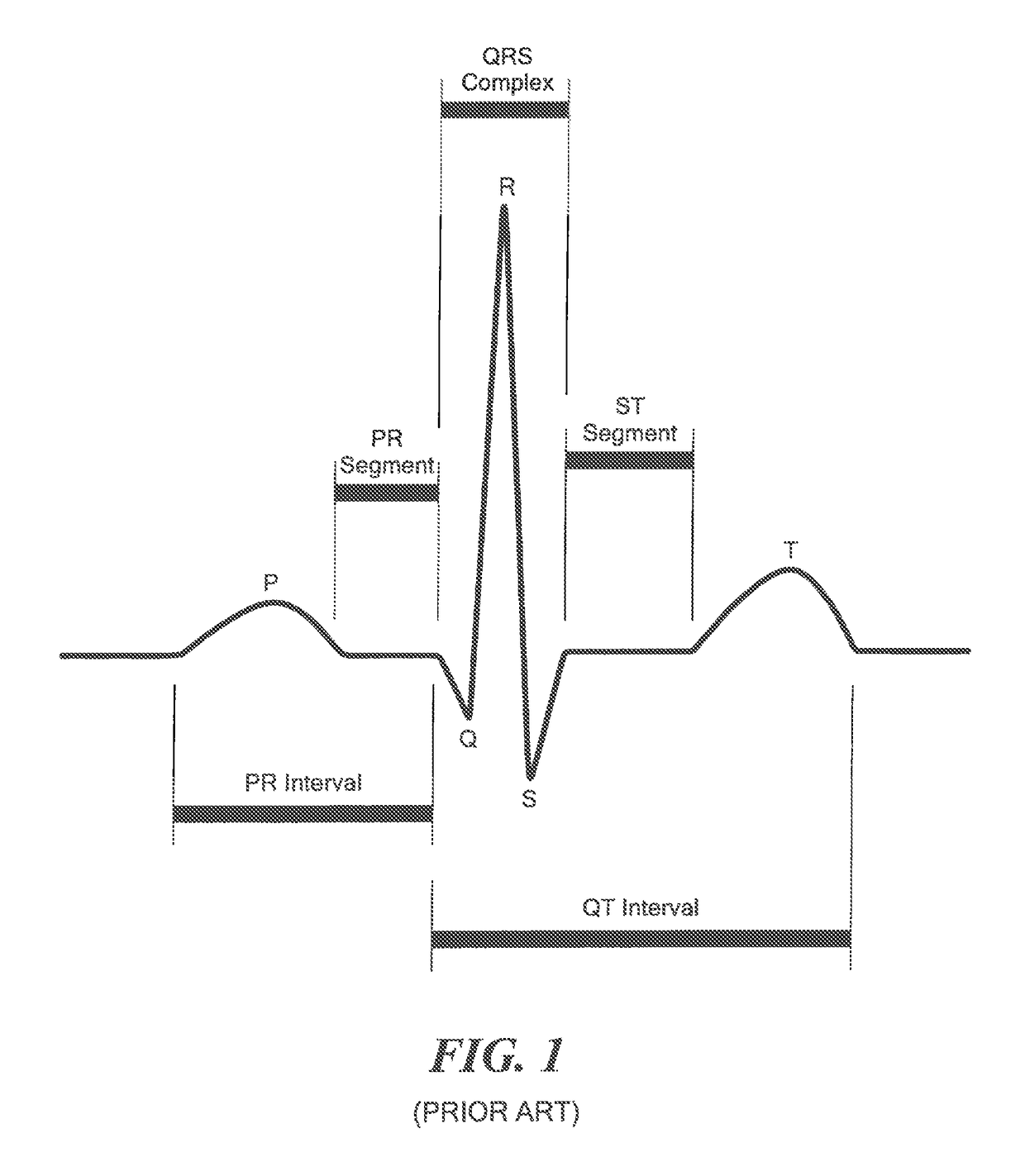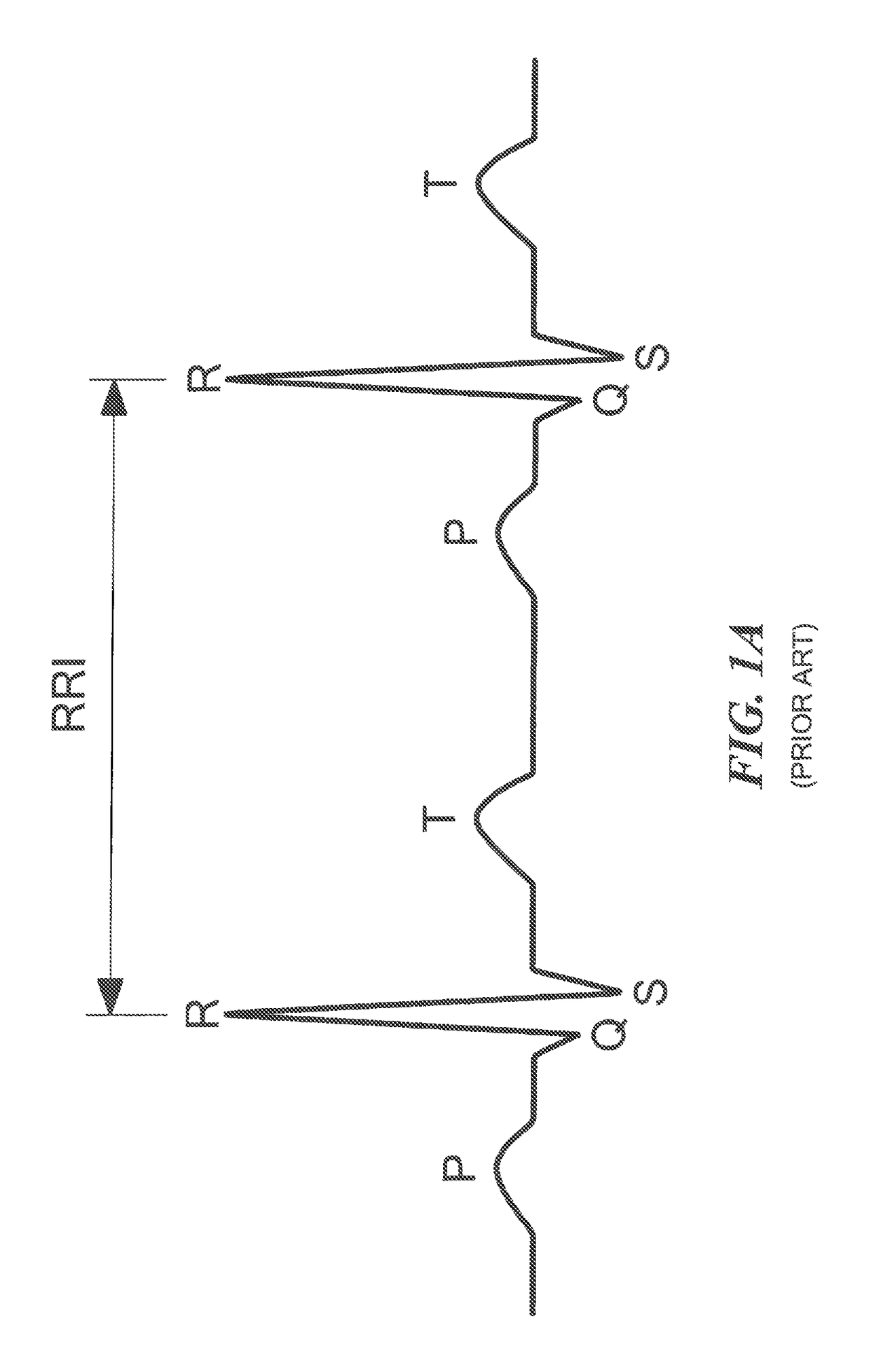Systems and methods for detecting a physiological abnormality in a patient by using cardiac or other chaos in combination with non-increasing parasympathetic modulation
a physiological abnormality and parasympathetic modulation technology, applied in the field of physiological abnormality detection, can solve the problems of large amount of data required, large amount of data collected from biosystems, and not immediately obvious cardiac abnormality, and achieve low false detection rate, high specificity of detection, and high sensitivity
- Summary
- Abstract
- Description
- Claims
- Application Information
AI Technical Summary
Benefits of technology
Problems solved by technology
Method used
Image
Examples
Embodiment Construction
[0029]Before describing the present invention, some introductory concepts and terminology are explained. As used herein, the term “noise titration” is used to describe a numerical method described in above-mentioned U.S. Pat. No. 5,792,062 and U.S. Pat. No. 5,938,594, which method can identify a relative amount of chaos in a sequence of values. Simply stated, an amount of non-linearity is first measured in a sequence of values. If non-linearity can be measured in the sequence of values, an increasing amount of random noise is added to the sequence of numbers until a noise limit (NL) is reached, beyond which point, the non-linearity can no longer be detected. The noise limit (NL) is related in a relative sense to an amount of chaos in the original sequence of values. The noise titration technique is further described below in conjunction with FIGS. 6 and 6A.
[0030]Traditionally, so-called “deterministic chaos” is defined as a form of low-dimensional nonlinear dynamics with bounded tra...
PUM
 Login to View More
Login to View More Abstract
Description
Claims
Application Information
 Login to View More
Login to View More - R&D
- Intellectual Property
- Life Sciences
- Materials
- Tech Scout
- Unparalleled Data Quality
- Higher Quality Content
- 60% Fewer Hallucinations
Browse by: Latest US Patents, China's latest patents, Technical Efficacy Thesaurus, Application Domain, Technology Topic, Popular Technical Reports.
© 2025 PatSnap. All rights reserved.Legal|Privacy policy|Modern Slavery Act Transparency Statement|Sitemap|About US| Contact US: help@patsnap.com



